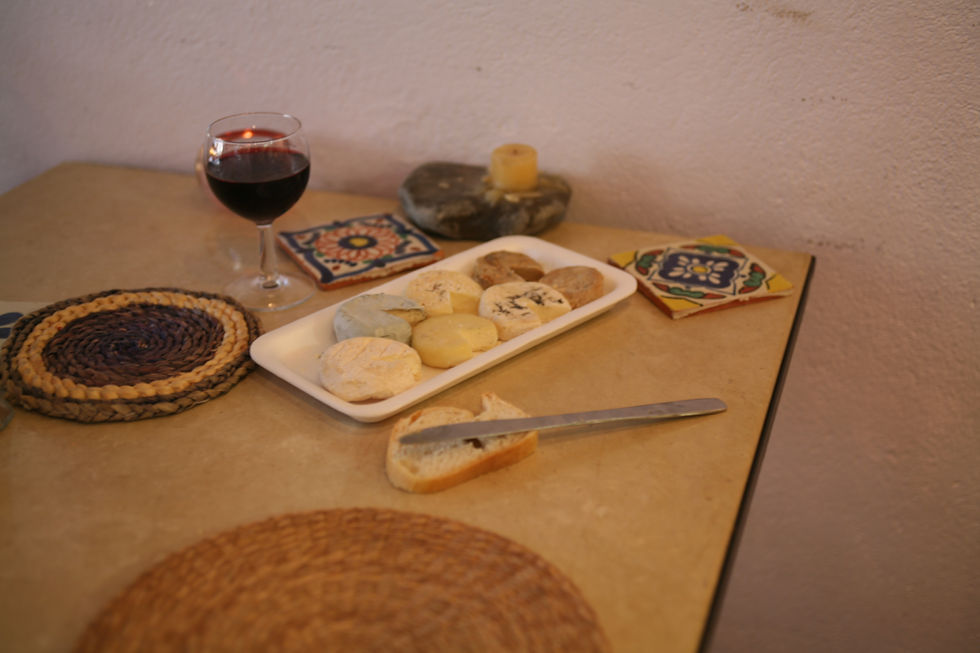(17) Appenzeller, in Switzerland, tradition in abundance!
- C Demeyer
- Jan 8, 2022
- 3 min read
From the north-east corner of Switzerland, Appenzel cheese is made like a typical Swiss product, hard and long lasting with taste.
It is officially known as Appenzeller but is not part of the Swiss AOC system, the name is however, registered, and synonymous with the cheese.
Due to the history of the land, the cheese had time to evolve slowly to what it is now. The “industry” that has been built around the cheese was created by artisans looking for consistency and quality. They definitely benefited from the peace enjoyed by the country and the economic pressures felt all over the world were felt midly but the producers every time went for the sure and tested method. They consolidated their efforts towards longevity, they could be described as conservative, even though most cheesemakers of the country have done exactly the same.

Somewhere in Switzerland (I used to give bread to ducks from there)
Please find below some information about Appenzeller.
History
At the beginning of the fourteenth century at the Abbey of St Gallen the tithe was paid by Appenzeller cheese, with many records attesting to this. The cheese has always been made in this area but only recently the Appenzeller Käse GmbH has put down all the requisite criteria and has proved its ability to do so. There used to be different mix used to wash the rind of the cheese, but it was decided that there should be only one to give uniformity through the production, this special recipe is kept secret with two keepers. It has become a commercial enterprise and is not expected to join the Swiss AOC system anytime soon.
Area of production
The east of Switzerland is bordered by Germany on the north through the Constance Lake and on the East by Lichtenstein and Austria over the Rhine river, the south of the area is delimited by the Walensee and the Obersee. This area is principally mountainous with a harsh continental climate and good rainfall. It is noted for the quality of its pastures on high ground with many varieties of flowers and herbs.
Production method
The milk from the cows grazing on the Alpine meadows is treated straight away and kept at body temperature for coagulation, 32oc for 30 to 40 min, followed by cutting of the curd mass and drainage of the whey. The curd grains are heated again and mixed, then moulding is done followed by pressing. Salting is by immersion in a bath of brine, followed by a time in a drying room for crust formation. The cheese is then transferred to the maturing cellar, 15oc and 90% relative humidity, for a minimum of three month during which it is brushed with a mixture of brine and Sulz (alcoholic herbal mix).
At 3 months it is “mild”, at 4 to 6 months it is “strong”,
and from 6 to 9 it is “extra spicy”; labels have different colour: silver, gold, and black.
11 variants are commercialised by the consortium:
“white label” with extra cream, mild, soft, and rich, aged for 3 months;
“silver label” aged for 3 months;
“gold label” aged for 4 to 5 months, fruity and expensive flavours;
“black label” matured for 6 months, developed flavours with trace of wood and bitterness;
“purple label” matured for 9 months, very hard, very complex flavours, for afficionados and special recipes;
“organic green label” 3 months;
“organic dark green label” 4 to 5 months;
“brown label” matured for 6 to 8 months, made from skimmed milk, full flavoured and spicy;
“alpenzeller” matured for 3 to 4 months, made form Alpine pastures milk during summer only;
raclette version and fondue product are commercialised as well.
Description
It is a medium-sized hard cheese with few small eyes, quite pleasing; when young it is interesting with a touch of bitterness and wood flavour for finish, when older a sensation of spiciness forms with roasted pecan nuts and marked bitterness with a complexity which will be amplified the more it is matured. This can be an acquired taste and will not be to everybody’s liking.
To be consumed within the week when cut, wrap in foil with cling film and keep in refrigerator. For best taste, leave 1 hour to breath and oxygenate while its temperature will give you the best flavour to enjoy.
Statistics
50 to 58 authorised producers, mostly set-up as cooperatives.
And remember, give life to your taste buds, and above all, enjoy real cheese.



Comments